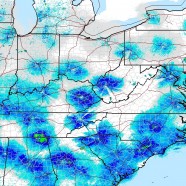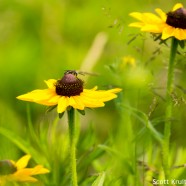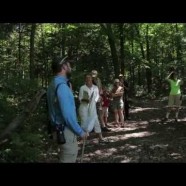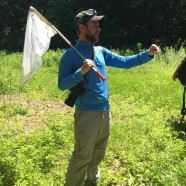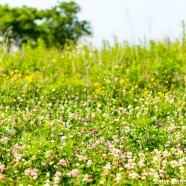Migration – August 12, 2015
Here is the migration map – also known as the radar of the eastern continental United States – a few hours after sunset here on August 12, 2015. Avian targets, along with undoubtedly a few insects and bats, were mostly active in the southern regions where the wind is more consistently out of the north. For those of us in the Northeast we have a flow pushing birds to the Atlantic Coast, a typical occurrence for the fall. In another month the winds will be stronger and skies will be fuller. For now you can keep expecting to find birds like Bobolink, Orchard Oriole, Northern...
Read MoreBlack-eyed Susan
It is a beautiful time of the year with July’s grasses and flowers filling every field with treasures like Rudbeckia hirta, or Black-eyed Susan, delighting our insects and sustaining our world. As we embark into August make sure you schedule time to be outdoors this weekend!
Read MoreDragonfly Hike
Here is a short video of the dragonfly hike that I led last weekend at the Aspetuck Land Trust’s Trout Brook Valley Conservation Area, as filmed by trail steward Thomas Carter Jr. on a hot and sticky Saturday morning and afternoon. Fortunately we had some great finds, including the threatened Tiger Spiketail, and you can see me netting a Widow Skimmer. Our thanks to Thomas! Scott Kruitbosch Conservation & Outreach...
Read MoreOdonate Walk
Via the Aspetuck Land Trust with photos from ALT’s Jacquie Littlejohn: Over the weekend, Scott Kruitbosch of the Roger Tory Peterson Institute of Natural History led an enthusiastic group of ALT members on a walk to see and learn about Odonata and Other Flying Objects in our Trout Brook Valley preserve. Among the various odonates (aka dragonflies and damselflies) we saw were: Widow Skimmer, Tiger Spiketail, Arrowhead Spiketail, Eastern Pondhawk, White-faced Meadowhawk, Twelve-spotted Skimmer, Common Whitetail, Ebony Jewelwing and Eastern Forktail. Everyone got to see multiple Tiger...
Read MorePollinator Meadows
You think there are a few pollinator sources here? It may not be the most ideal mix of vegetation, and it may contain some non-native and even dominant or invasive species, but it is far better than a mowed lawn or some pavement, full of busy bees, beetles, butterflies and many other insects. Let it grow and keep it chemical free, folks! We can perfect it later.
Read More



